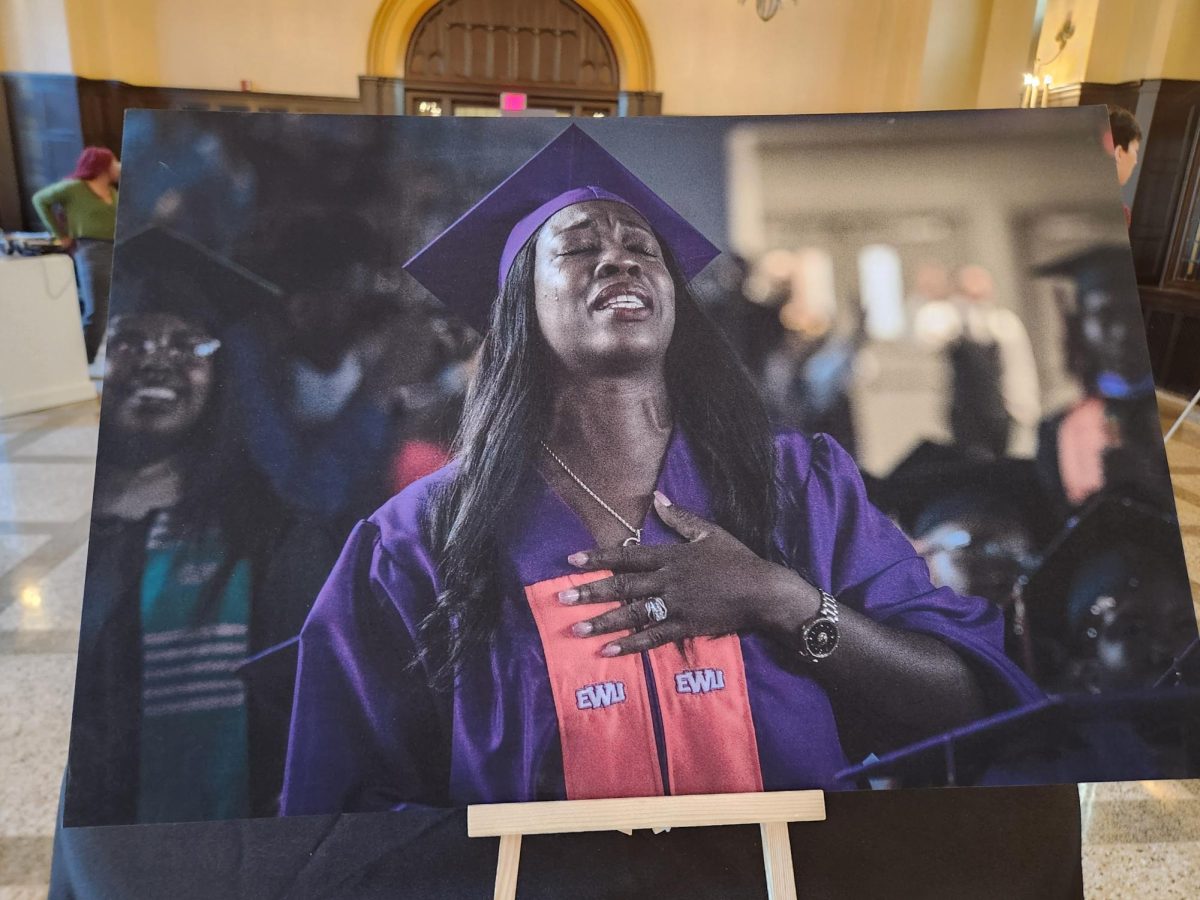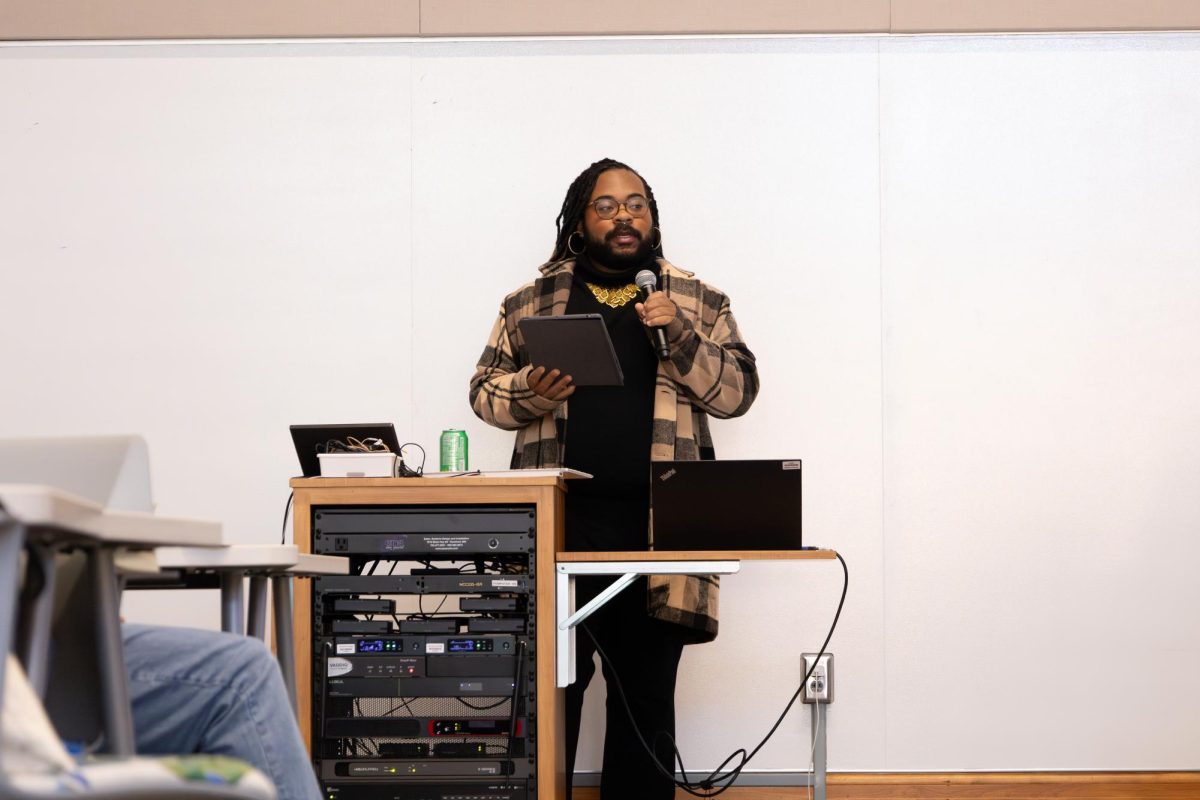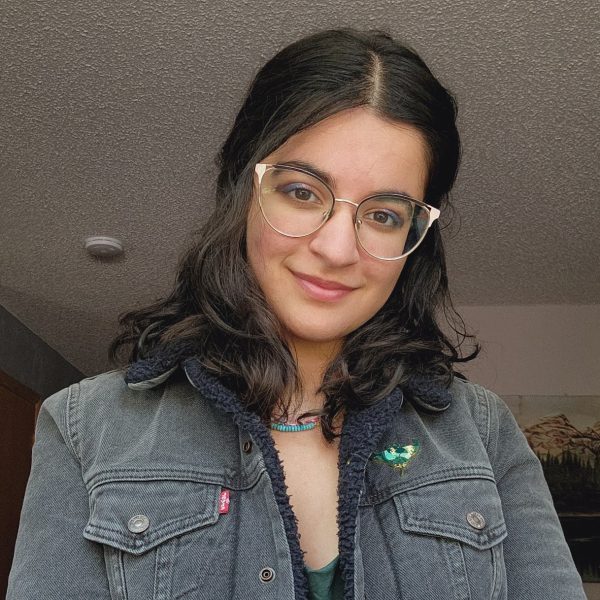On Thursday, Feb. 1 from 4:00-5:30 p.m., the Office of Intercultural Life (OIL) presented a multimedia exhibition at the Great Hall, marking the start of Black History Month. This exhibition, entitled “Black Joy Is— A Multimedia Exhibition,” documented through various forms of media the question: What is Black joy?
In a video that played during the exhibition, Black students at Carleton explained what it means to them. A couple examples of their answers were “celebration” and “art.” The exhibition centered the joyful experiences of Black Americans in various ways at different points in time.
The video was created by OIL Peer Leader Vivian Agugo ’26 alongside Art Onwumere ’24, who has experience in photography and video production. The “Black Joy Is—” video was inspired by one that was done by the National Black Theater. Agugo interviewed Black Carleton students, asking them, “What is Black joy?”
When asked about some of her favorite responses, Agugo recalled a student saying “‘Black joy is like seeing roses grow out of concrete,’ which I thought really encapsulated how, despite the hardships our people have faced, we’re still able to prevail and do amazing things.” Another answer she remembers as being funny was Onwumere’s answer — his own name.
Agugo’s personal answer was echoed by Caleb Odou ’26, another peer leader, in the idea of “community.” She noted that many of the answers reflected similar themes of community and creativity, “celebrating each other.”
As another OIL Peer Leader, Tiffany Nyamao ’25, said: “I mentor freshmen as they come into Carleton, helping them out on their journey in navigating both college and being a person of color on campus.” The role of Peer Leaders in putting together the exhibition was mainly supporting the OIL staff who created the event and helping set up.
When visitors entered the Great Hall, they were greeted by OIL staff members and a table with brochures, postcards featuring Black art and OIL keychains they could take home.
The Black Joy Project by Kleaver Cruz inspired OIL’s multimedia presentation. OIL’s exhibition brochure says that the idea of “Black Joy” serves “to celebrate and uplift the diverse experiences of the Black community,” and that “the exhibition demonstrates the use of joy as resistance…”
The brochure covers the history of Black Americans, noting their many struggles for equality, from Jim Crow laws and the Great Migration to police violence. Yet it also says, “But in the face of this adversity, Black people found joy: in securing legal rights and freedom, in the power of community, and in reveling in the hope of prosperity and opportunity on the horizon.”
The idea came to OIL at Carleton through Nyemade Fallah ’24, one of the co-presidents of the Black Student Alliance (BSA). “She brought up that Black history is not celebrated as much [at Carleton],” Agugo explained. The work of uplifting and highlighting Black history often “happens to fall on students.” Fallah’s idea was to put a “positive spin” on Black history, in Agugo’s words, so that not only the work of Black figures was being celebrated, but also the more “joyous parts.”
Alongside that same wall was a table featuring the literature of Black authors, such as Ralph Ellison, Maya Angelou, Lorraine Hansberry and Langston Hughes.
In the main part of the Great Hall, visitors could walk through a temporary gallery filled with photographs and artwork depicting expressions of Black joy. Agugo really liked seeing the photography celebrating Black joy, “just seeing Black people happy.”
One photograph showed laughing children cooling off with fire hydrants before the desegregation of public swimming pools in Chicago, while another showed a group of people jumping into a public pool in Pennsylvania.
Some photographs depicted marching bands and cheerleaders at Historically Black Colleges and Universities (HBCUs), and others showed some of Carleton’s Black students laughing together or dancing in Ebony II, the all-Black pre-Synchrony II dance group from the ’70s.
For Nyamao, one of the most meaningful pieces on display was a set of photos showing two Black women’s college graduation. The set is titled “What It Means To Learn” and taken by Will Brown. One zoomed in close on a woman’s cap, showing the words “Breaking one generational curse at a time,” while the other depicted a woman, clad in her cap and gown, holding her chest and crying in celebration.
Throughout these different time periods, one thing remained constant: they depict Black people laughing and smiling, in genuine expressions of joy. Both Nyamao and Agugo remarked that they enjoyed this aspect of the exhibition.
“I think it shows that Black joy is not something new,” Nyamao said. She said that some of the photos reminded her of things she might do at home, such as “chatting it up with my high school friends. I think it’s a nice reminder that Black joy is not stagnant; it moves through time. It may change and redefine itself, but it’s always there.”
Agugo remarked on a photograph which depicted a Black Panther activist laughing during a protest. “Oftentimes when people think about Black Panthers, they think of more negative connotations, when in actuality they did so much,” Agugo said.
One aspect of the way Black history is often portrayed in the mainstream media that she is critical of is how certain Black figures get represented. Agugo wants Black History Month celebrations to appreciate “the past, present and future” of Black history. “It is important to recognize the heroes that came before us,” she said, especially in having multifaceted portrayals of figures beyond popularly portrayed heroes like Martin Luther King Jr.
Alongside books, photos and art, the exhibition also featured a listening station where visitors could put on a pair of headphones and listen to a curated Spotify playlist called “The Black Joy Project Book — The Playlist,” as well as an art- and collage-making station. Nyamao worked at the playlist station, giving visitors song recommendations and encouraging people to “hear what good songs are out there.” This interactive aspect of the Exhibition was one of Agugo’s favorite parts, with her noting the song “Castaways” from the children’s show “The Backyardigans” as a nostalgic track on the playlist.
On why she thinks highlighting Black joy is important at a predominantly white institution (PWI) such as Carleton, Nyamao said: “as a Black individual myself I forget [joy]. There’s a lot of things that go against you: being the only person of color in your class, being the only person who can relate to certain phrases, songs, circumstances, being in a world where there’s a lot of prejudice and racism against Black people.” All of those things “can get to you a lot. It builds up over time.”
“But to have something [like the celebration of Black joy],” she said, “as a reminder that you can smile, and that there’s joyful moments is really a big thing… Even in those moments of despair, hard times, Black joy has its way of showing up, to make a moment that seems unbearable” something that you can get through. Black joy, for her, is healing in that way.
For “a lot of students, especially Black students,” Agugo said, “it can be hard to recognize the good that we do or our achievements. Sometimes we’re our biggest critics — I know I am.” With Black joy, she said that “taking the time to recognize those accomplishments and focusing on the positives is one of the biggest parts, especially at a PWI where our voices… are not typically seen in our papers, on the school website, or Carleton Today… so when we do see it, it brings joy.”
Agugo said that “I hope the theme of Black joy continues to amplify the voices of all Black students, because we all do great things here while we’re at Carleton.” Another aspect of Black joy that is important for Agugo in her experience as a first-generation college student at Carleton is “Taking time to have fun, especially being in a college setting… Sometimes it’s hard to give yourself that break.”
“I think it is a form of resistance,” Nyamao said. “I think it shows that as much as horrible things happen to Black communities, we’re not defined as that.” One example she spoke of was protest through song and dance.
On how Black History Month is celebrated at Carleton, Nyamao said, “I wish more people tapped into it. I think as much as we have Black cultural orgs on campus, like BSA, ACA [African and Caribbean Association] and OIL… at Carleton it seems like sometimes students are afraid to step in those spaces because they don’t want to take over.” However, she said that “I think that it’s important for students who are not Black to come and have these hard discussions, but also to show that it’s okay to be in these spaces and we want you in these spaces.” For example, with the exhibition on Thursday, she said, “We want you to experience the things that we find joyful, because they’re probably the exact same things.”
Nyamao said that for her Black History Month is more than a month, “it’s a lifestyle and a way of being.” Because of this she said that “I wish [Carleton] did more with tying it throughout the whole academic year, rather than it being a one month thing and being like, ‘Okay, ’till next year.’”
Agugo echoed Nyamao’s thoughts, saying, “I would like for the college to do more.” She noted this is especially important in regard to the college’s goal of diversifying its student body. She said that “It’s one thing to bring those students on here; it’s another thing to make those students feel wanted [and] loved while here.”
Of her experience at a PWI like Carleton, Nyamao said, “There’s certain things that I can’t say and don’t do, just because I know that although [people are] well-intentioned they would not understand what I was talking about. It’s been hard as a Black student to navigate that.”
“I think it would be really cool if Black students could take space at Carleton in a public space,” Nyamao added. “I think sometimes these events seem hidden, and it sometimes feels like we have to hide our joy, hide our events, hide our culture. As much as we’re a minority, we’re still here at Carleton.” Some examples of ideas she and Agugo mentioned were holding events in the Weitz or during common time where they’d be more widely seen. “We still make up Carleton, we still have a culture and a place here,” Nyamao said. “I think it’s nice to know that we’re supported.”
Some upcoming events that are being held around campus for Black History Month include (and have included) the “Black Joy Is Stepping” workshop on Feb. 7, Bon Appetit’s collaboration with BSA on Sundays and more events hosted by BSA throughout February.












